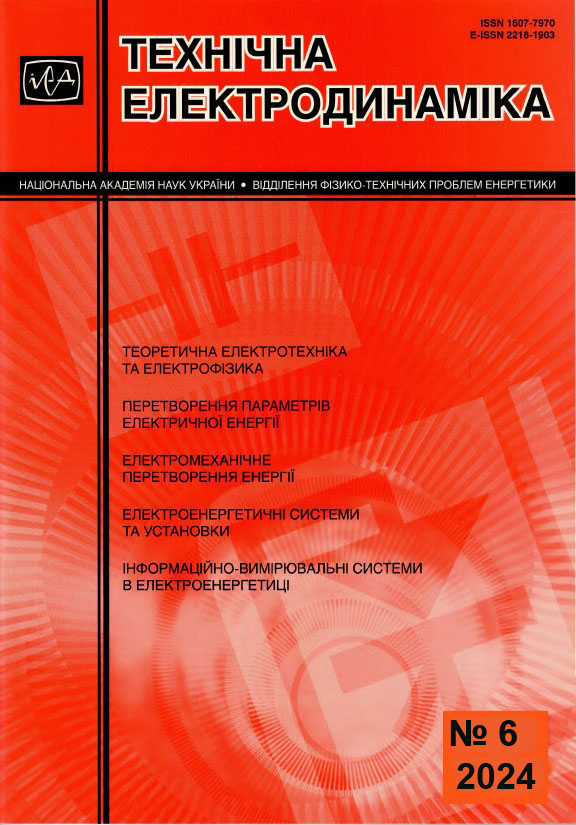Abstract
Тhe methods of amperostatic coulometry and the design of existing equipment for their application are analyzed. A new approach to the design of a coulometric system for the National Amount of Substance Electrochemical Standard is proposed. It consists in combining the means for performing the main operations of the primary amperostatic coulometry method in a single hardware and software unit that performs titration and automated control of this process, as well as receiving and processing the measuring signals required for this. The structure and functional diagram of the measuring unit of a precision automatic coulometry titrator using the latest element base are developed. The appearance and brief description of the created compact measuring system are given. The proposed algorithm for inversion of the measured voltage is described, which made it possible to significantly improve the accuracy of titration current measurement. A new version of median filtration of the measuring signal is presented, which made it possible to increase the accuracy of recording changes in the solution potential and determining the moment of end of the electrochemical reaction. The effectiveness of the developed technical solutions is confirmed by the results of international comparisons, to which references are provided. References 18, figures 4.
References
Mariassy M. Major applications of electrochemical techniques at national metrology institutes. Metrologiia. 2009. Vol. 46. No 3. Pp.199–213. DOI: https://doi.org/10.1088/0026-1394/46/3/007.
Richter W. Primary methods of measurement in chemical analysis. Accred. Qual. Assur. 1997. Vol. 2. Pp. 354–359. DOI: https://doi.org/10.1007/s007690050165.
Villela R.L.A., Borges P.P., Vyskočil L. Comparison of methods for accurate end-point detection of potentiometric titrations. Journal of Physics: Conference Series. 2015. Vol. 575. Pp. 1–6. DOI: https://doi.org/10.1088/1742-6596/575/1/012033.
Máriássy M., Vyskočil L., Mathiasová A. Link to the SI via primary direct methods. Accred. Qual. Assur. 2000. Vol. 5. Pp. 437–440. DOI: https://doi.org/10.1007/s007690000222.
Scholz F., Bond A.M., Compton R.G., Fiedler D.A., Gyorgy Inzelt, Kahlert H., Sebojka Komorsky-Lovric. Electroanalytical methods. Guide to experiments and applications. Berlin: Springer-Verlag, 2005. 353 p.
Milton M.J.T., Quinn T.J. Primary methods for the measurement of amount of substance. Metrologiia. 2001. Vol. 38. No 4. Pp. 289–296. DOI: https://doi.org/10.1088/0026-1394/38/4/1.
Asakai T., Murayama M. Scheme and studies of reference materials for volumetric analysis in Japan. Accred Qual Assur. 2008. Vol. 13. Pp. 351–360. DOI: https://doi.org/10.1007/s00769-008-0375-9.
Asakai T., Murayama M., Tanaka T. Determination of the purity of acidimetric standards by constant-current coulometry, and the intercomparison between CRMs. Accred Qual Assur. 2007. Vol. 12. Pp. 151–155. DOI: https://doi.org/10.1007/s00769-006-0203-z.
Pratt K.W. Automated, high-precision coulometric titrimetry. Part I: Engineering and implementation. Analytica Chimica Acta. 1994. Vol. 289. Issue 2. Pp.125–134. DOI: https://doi.org/10.1016/0003-2670(94)80095-2.
Pratt K.W. Automated, high-precision coulometric titrimetry. Part II: Strong and weak acids and bases. Analytica Chimica Acta. 1994. Vol. 289. Issie 2. Pp. 135–142. DOI: https://doi.org/10.1016/0003-2670(94)80096-0.
Smith-Osorio J., Castillo A., Torres-Quezada H., Sandoval-Rojas A.P., Ágreda J. Development of a coulometer at the National Metrology Institute of Colombia: determining the amount of substance content of potassium hydrogen phthalate. Quim. Nova. 2024. Vol. 47. No 3. Pp. 1–9. DOI: https://doi.org/10.21577/0100-4042.20230104.
Kyungmin Jo, Youngran Lim, Kyoung-Seok Lee, Euijin Hwang. Development of a coulometry system at the Korea Research Institute of Standards and Science and evaluation of the measurement uncertainty originating from the system. Metrologiia. 2023. Vol. 60. No 6. Article ID 065004. DOI: https://doi.org/10.1088/1681-7575/acff75.
Gutnikov V.S. Filtering of measurement signals. Leningrad: Energoatomizdat, 1990. 194 p. (Rus)
Davydov A.V. Digital signal processing: Tematicheskie lekcii. Ekaterinburg: UGGU, IGiG, GIN, Fond elektronnyh dokumentov, 2005. 35 p. (Rus)
Kouen K.F.N., Grant P.M. Adaptive filters. Moskva: Mir, 1988. 392 p. (Rus)
Surdu M.N., Ahmadov A.A-B., Ahmadov S.A., Kursin S.V., Lameko A.L., Muharovskij M.Ya. Precision comparator for reproducing the inductance unit and transmitting its size in a range of values. Ukrayinskyi metrologichnyi zhurnal. 2008. No 4. Pp. 14–22. (Rus)
Wu B., Sobina A., Recknagel S., Meinhardt R., Rivera-Sánchez Gr., Ortiz-Aparicio J.L., Rozikova M., Borges P.P., Sobral S.P., Zhou T. Key comparison on Assay of Sodium Carbonate. Metrologia. 2023. Vol. 60. No 1A. Article ID: 08004. DOI: https://doi.org/10.1088/0026-1394/60/1A/08004.
Máriássy M., Hanková Z., Petrenko A., Melnykov O., Melnyk V., Lameko O., Borges P.P., Sobral S.P. Report of subsequent key comparison CCQM - K73.2018.2 amount content of H+ in hydrochloric acid (0.1 mol/kg-1) Metrologia. 2024. Vol. 61. No 1A. Article ID: 08009. DOI: https://doi.org/10.1088/0026-1394/61/1A/08009.

This work is licensed under a Creative Commons Attribution-NonCommercial-NoDerivatives 4.0 International License.
Copyright (c) 2024 Array






